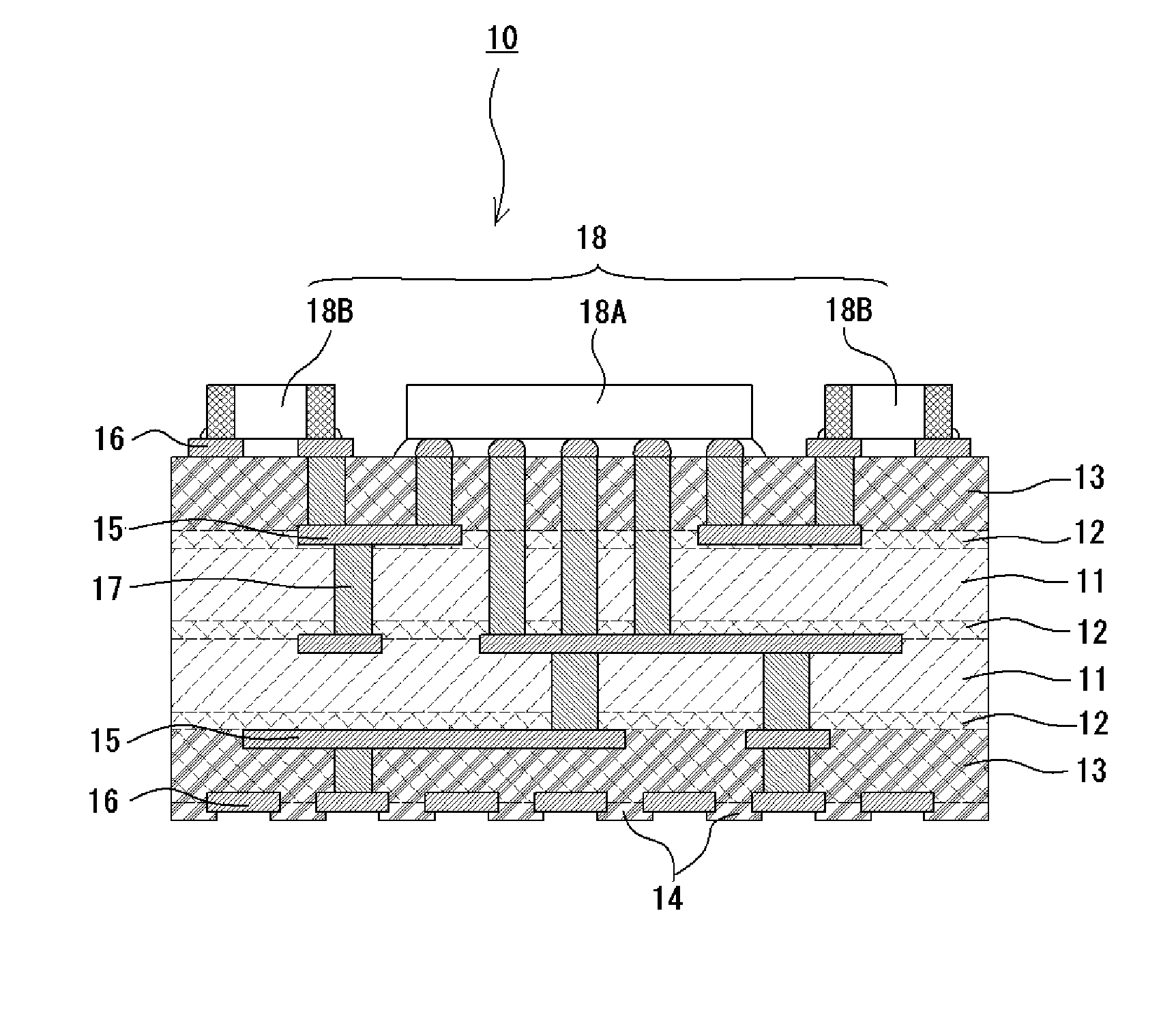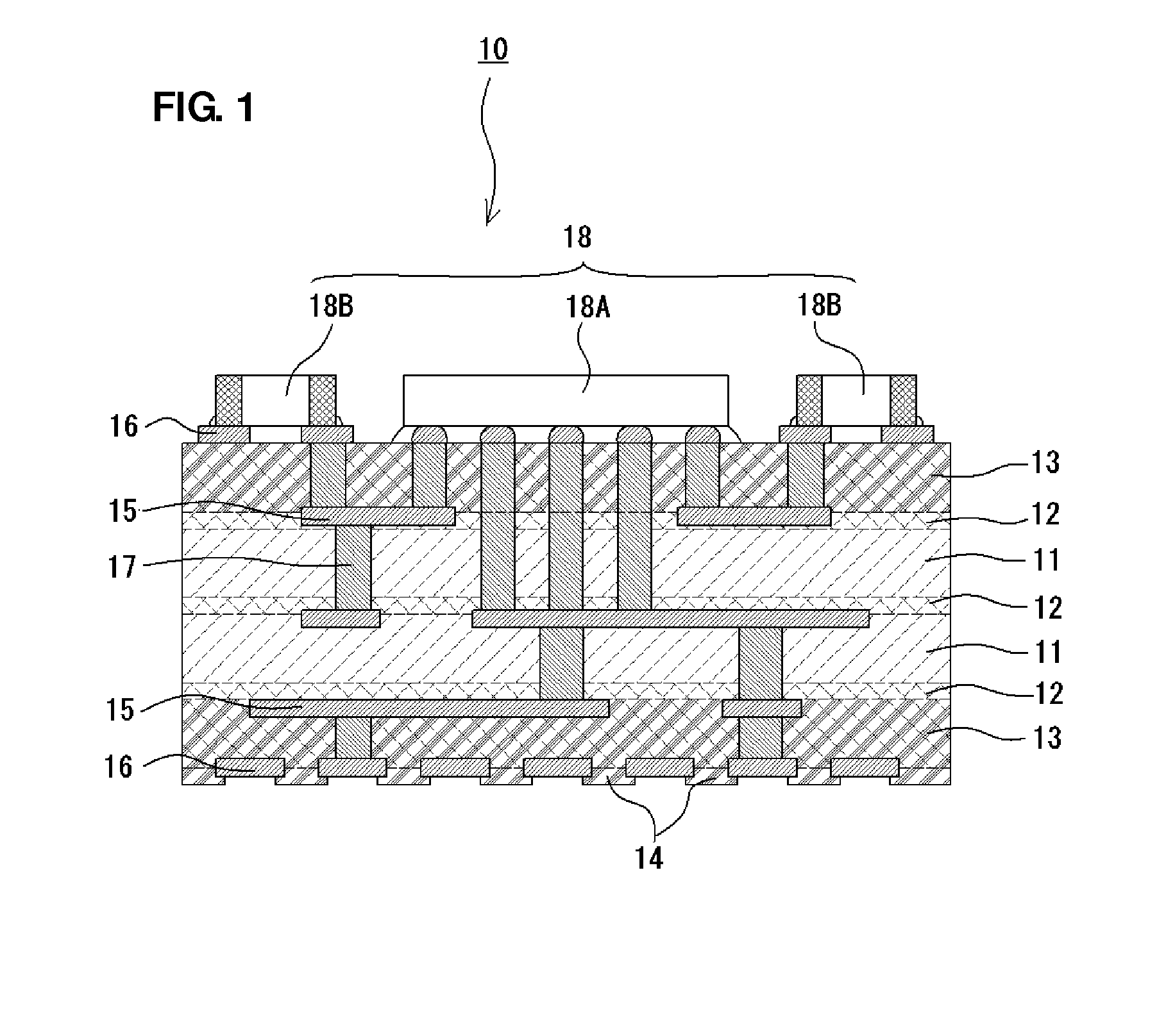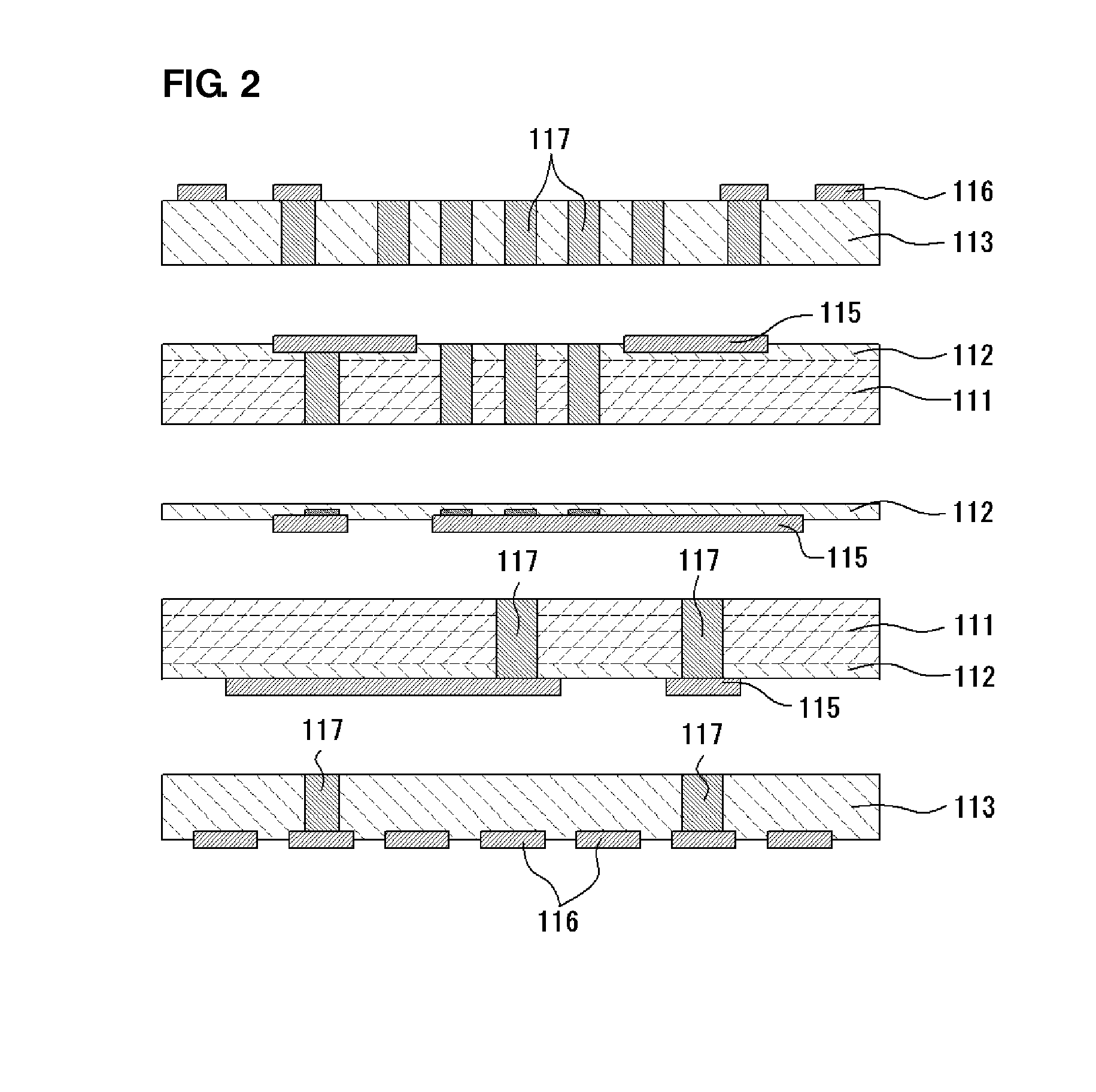Ceramic composite multilayer substrate, method for manufacturing ceramic composite multilayer substrate and electronic component
- Summary
- Abstract
- Description
- Claims
- Application Information
AI Technical Summary
Benefits of technology
Problems solved by technology
Method used
Image
Examples
first preferred embodiment
[0048]A ceramic composite multilayer substrate 10 of this preferred embodiment preferably includes, as shown in FIG. 1, for example, a first ceramic layer 11, a second ceramic layer 12 that is laminated so as to contact one principal surface (upper surface) of the first ceramic layer and functions as an internal constraining layer, and a resin / ceramic composite layer 13 that is laminated so as to contact the principal surface (upper surface) of the second ceramic layer 12 and is impregnated with a resin. On the other principal surface (undersurface) of the first ceramic layer 11, the second ceramic layer 12, the first ceramic layer 11, the second ceramic layer 12, and the resin / ceramic composite layer 13 are laminated toward the bottom in this order. When the first and second ceramic layers 11 and 12 and the resin / ceramic composite layer 13 are considered to be one composite laminate, the ceramic composite multilayer substrate 10 has another composite laminate laminated on the under...
second preferred embodiment
[0075]As shown in FIG. 7, a ceramic composite multilayer substrate 10A of this preferred embodiment is structured similarly as in the first preferred embodiment, except that the ceramic composite multilayer substrate 10A is not provided with the second ceramic layer 12 disposed between the first ceramic layer and the resin / ceramic composite layer 13 at the upper side and the resin / ceramic composite layer 13 at the lower side in the ceramic composite multilayer substrate 10 of the first preferred embodiment. Accordingly, the same reference numbers are used also in this preferred embodiment for components which are the same as or equivalent to those in the first preferred embodiment.
[0076]In order to obtain a flat substrate after firing, the porous ceramic layers 13A acting as a resin-impregnated layer are preferably disposed with the same thickness on both sides of the ceramic substrate. However, the structure is not limited to the above depending on the structure of the ceramic comp...
third preferred embodiment
[0077]As shown in FIG. 8, a ceramic composite multilayer substrate 10B of this preferred embodiment is structured similarly as in the first preferred embodiment, except that the second ceramic layers 12 disposed between the first ceramic layers 11 and the resin / ceramic composite layers 13 disposed at the upper and lower sides, respectively, in the ceramic composite multilayer substrates 10 of the first preferred embodiment are omitted. Accordingly, the same reference numbers are used also in this preferred embodiment for components that are the same as or equivalent to those in the first preferred embodiment.
[0078]In order to obtain a high-precision ceramic composite multilayer substrate 10 in which firing shrinkage in the in-plane direction is suppressed as in the ceramic composite multilayer substrate 10 of the first preferred embodiment, it is preferable to dispose the second ceramic layer 12 having a required thickness in the lamination direction for every at least 40 μm, for ex...
PUM
| Property | Measurement | Unit |
|---|---|---|
| Length | aaaaa | aaaaa |
| Length | aaaaa | aaaaa |
| Length | aaaaa | aaaaa |
Abstract
Description
Claims
Application Information
 Login to View More
Login to View More - R&D
- Intellectual Property
- Life Sciences
- Materials
- Tech Scout
- Unparalleled Data Quality
- Higher Quality Content
- 60% Fewer Hallucinations
Browse by: Latest US Patents, China's latest patents, Technical Efficacy Thesaurus, Application Domain, Technology Topic, Popular Technical Reports.
© 2025 PatSnap. All rights reserved.Legal|Privacy policy|Modern Slavery Act Transparency Statement|Sitemap|About US| Contact US: help@patsnap.com



